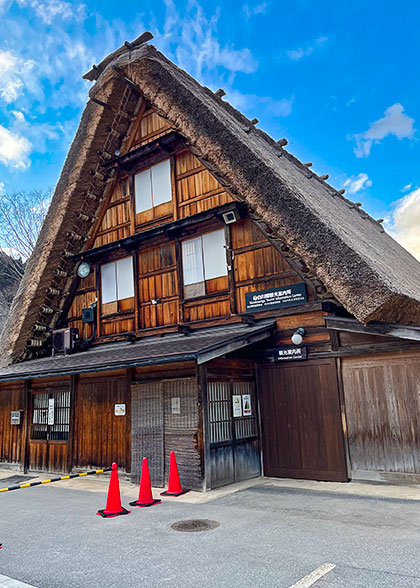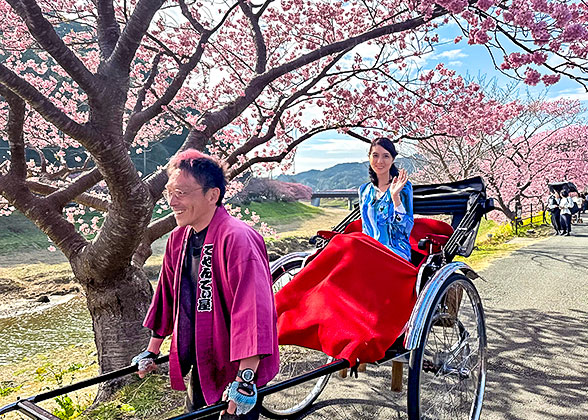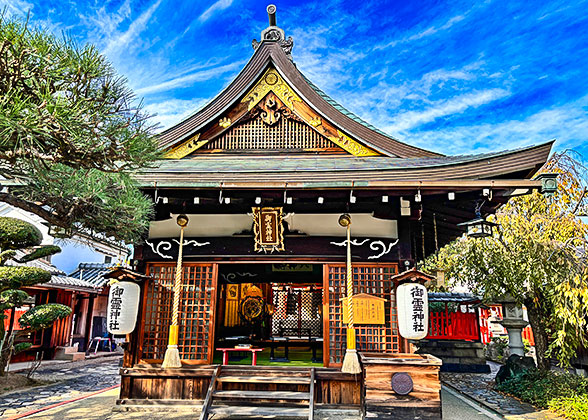Shirakawa-go Weather in July
1. In July, Shirakawa-go’s weather is hot, but cooler than nearby cities, so it counts as a summer retreat.
2. In consideration of high rainfall and strong sunshine, a parasol is very useful.
Hot, But Still Cooler than Surrounding Urban Areas

Gassho-style House
|
Rainiest Month of the Year
As the rainy season is ongoing, July sees the average precipitation of 352mm (13.9 in) from 17 rainy days. Light or moderate showers are more common, while heavy rain also falls occasionally, bringing high rainfall of 20 - 30 mm (0.8 - 1.2 in) per hour.
It may rain on and off within a single day, which is unfavorable for outdoor sightseeing, but good news is that both air and scenery get much fresher after rain and the summer scenery in light rain has its own glamour.
In July, relative humidity averages around 86%, a high level. But don’t worry too much: because of Shirakawa-go’s high altitude and dense vegetation, you don’t feel as sultry as in nearby cities.

Rainy Scene in July
|
Daylight Hours & Sunshine Hours
On average, the daily duration of daytime is approximately 14 - 14.5 hours in July, one of the months with the longest days. Thus, even if you have a two-hour break at hot noon, there still is plenty of time to visit. Rainy as it is, sunshine hours average 7.1 hours per day.
During sunny periods, UV rays are very intense with the maximum UV index of 11, and you possibly get sunburnt without proper sun-protective measures.
Packing List for Shirakawa-go Trip in July

|
![]() Shoes: Many popular attractions require a lot of walking, so choose comfortable and lightweight sneakers. On rainy days, you need waterproof and non-slip shoe covers; of course, comfy rain boots are the best footwear in the rainy weather condition.
Shoes: Many popular attractions require a lot of walking, so choose comfortable and lightweight sneakers. On rainy days, you need waterproof and non-slip shoe covers; of course, comfy rain boots are the best footwear in the rainy weather condition.
![]() Accessories:
Accessories:
1. Sunscreen, sunglasses and sunhats are extremely important items on sunny days.
2. Raingear is a must, but a parasol is more recommended, which can be used both during sunny and rainy periods.
3. You may sweat a lot on sunny days, so take a portable bottle and regularly drink water to stay hydrated.
4. If you are afraid of insects, bug repellent is necessary.
Travel Advice and Tips
1. In fact, due to its frequent rainfall, July is not a good time to visit Shirakawa-go. But as the summer holidays begin in July, the village is likely to see an increasing number of travelers. Given limited restaurants and inns, it’s better to book them early if you plan to come here in July 2026.
2. During the hottest time of the day, it’s better to stay indoors or in the shade. For example, go for café Bunka Kissa Kyoshu and take a cold drink to cool off, while comfortably appreciating luxuriant scenery outside the window. Or sitting in the leafy shade of trees beside the Shō River banks, listen to the sound of water trickling and cicadas chirping.
3. In July, Shirakawa-go offers lots of surprises waiting to be explored, such as clusters of blooming hydrangeas along the paths, agile Scaly Thrushes on the branches and the thatched roof of the farmhouses glowing orange by sunset.
|
|
|




